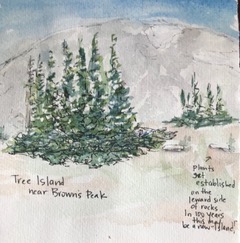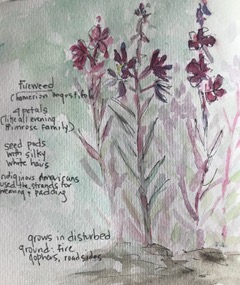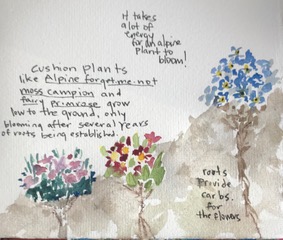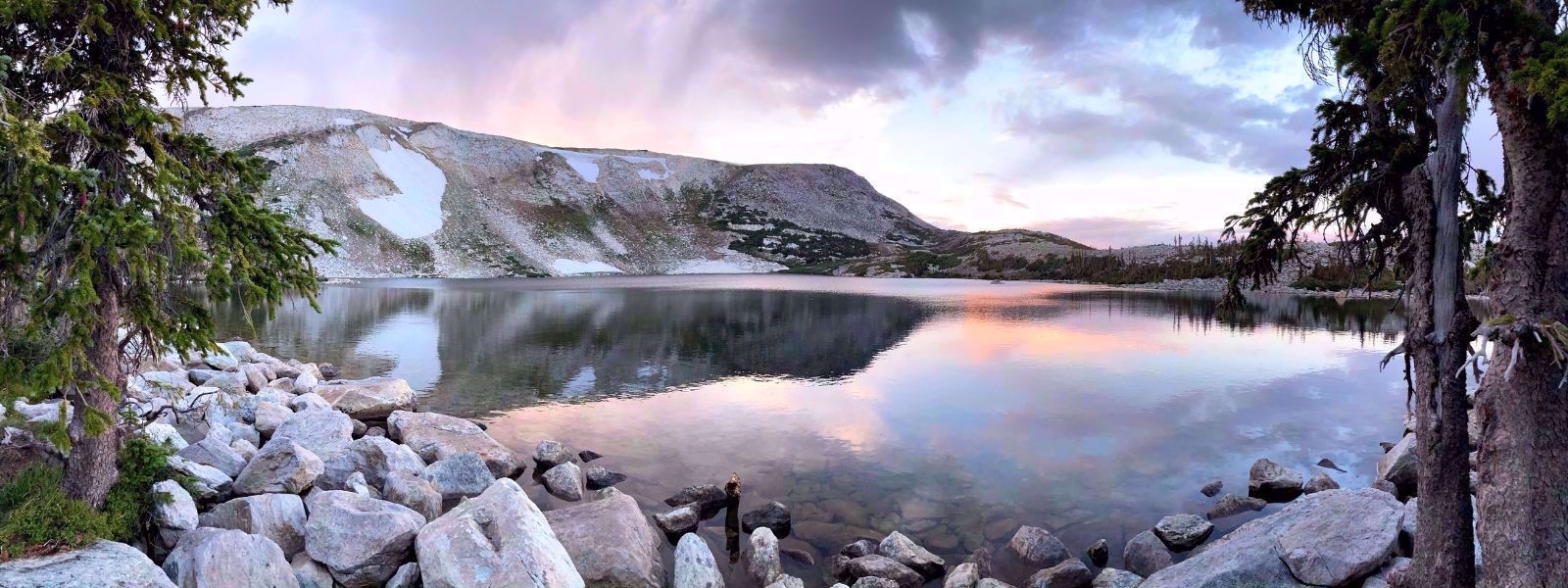We can always look to Nature for the best examples of resilience, accepting challenge, and adapting to changing circumstances.
These lessons were well taken for our first AGC trip in the Covid-19 pandemic era -- Alpine Backpacking in the Snowy Mountains of Wyoming. Staff and guides prepared for this trip like no other in recent history, making a number of needed changes in the fluid situation with rapidly changing information, closures, and government recommendations. Our participants weighed their personal pros and cons of traveling now, and made their own preparations for a successful trip.
Community Support at Treeline
For this trip, AGC created new safety procedures and the group worked together in new ways to stay healthy, including wearing masks and “socially distancing.” Our community of 12 reminded me of the “tree islands” that we hiked past. In the harsh subalpine environment at 10,500 feet above sea level, we were near the upper elevation limit that trees can grow. Engelmann Spruce and Subalpine Fir trees adapt to the fierce winds and long winters by growing in “tree islands,” with a number of trees to shelter each other in a community, with space between the next island. They adapt to the challenging winds with twisted trunks known as Krummholz, (similarly, a twisted rope is stronger than a single, straight strand) and flag-like branches grow on the leeward side of the trees, indicating the direction of the prevailing winds.
Many of the trees have “skirt branches” that extend at ground level far out from the trunks. Insulated under the winter snows, these branches have an advantage over the taller trunks, exposed to the desiccating winter winds. In fact, all of the trees grow much smaller than their low altitude relatives, so one of those “baby” trees, might be over 100 years old!
 |
| Tree Island Near Brown's Peak |
Adaptability
Surviving a pandemic requires flexibility and resourcefulness, especially for a small business. The AGC staff has been working nonstop to assess and modify upcoming trip logistics for Covid-19 safety as well as helping women register, transfer, and change options to trips that meet their needs.
On our Alpine backpacking trip, we saw adaptability in action with the bright magenta flowers of Fireweed (Chamerion angustifolium). Fireweed is aptly named since it is often one of the first plants to bloom after disturbances such as wildfires (or even after the World War II bombings in England). The showy flowers bloom from the bottom of the stem to the top; so people predict winter is a few weeks away when the top blooms and the stems and leaves turn purplish-red. The color change happens when colder nights signal the plants to stop green chlorophyll production, so the anthocyanin pigments (that are always present) are able to show their color. These compounds have been referred to as “anti-freeze,” helping to protect the plant tissue from falling temperatures. This adaption to the changing seasons enables fireweed to survive.
 |
| Fireweed |
Alpine Plants Grow in Micro Communities
Depending on each place in the alpine environment's protection from wind and available moisture, different types of plants grow. On our trip, we learned about the fell field communities – windswept, dry hillsides or ridge areas where cushion plants slowly grow. In these xeric places with severe winds and intense solar radiation, plants have adapted to grow low to the ground in mound-like cushions. The patchwork of tiny flowers that bloom in June and July were gone to seed by the time we passed through, but small dried-out green cushion plants were spaced-out, reminding us to try to step on rocks, instead of the plants in these areas. There is an adage, “Alpine plants grow by the millimeter and die by the foot” (meaning the human foot…)
 |
| Cushion Plants |
Yet, nearby, another community of stream-side plants was sheltered from the wind, with plenty of available water, seemed topical in contrast. Arnica (Arnica mollis) and Dock ( Rumex hymenosepalus) were still blooming in force.
AGC has always been about our own micro-communities through small group adventures. For this trip, we had nine participants and we provided solo tents, to provide social distance even when sleeping. Our backcountry campsite was near Lost Lake, a fitting place for us to get lost in nature appreciation. After setting up camp, Charlotte, one of the participants exclaimed, “When I thought about this backpack trip, I dreamed of my tent near a beautiful alpine lake – Wow did my dream came true!”
.png) |
| Backcountry by an alpine lake |
Although the trip was a success in so many ways, her affirmation, and everyone’s appreciation of our fantastic natural environment made all of the challenges worthwhile.
For those of us who love the backcountry, there is an indescribable feeling when all the preparations are done, and finally, the packs are on our backs, boots crunching against the rocky trail, focusing on each step and glancing ahead to the way forward.
Alpine backpacking in the Snowy Mountains was even more satisfying this year, reinforcing that Adventures in Good Company is back to doing what we do best – helping women experience meaningful adventures, with nature as our guide.



